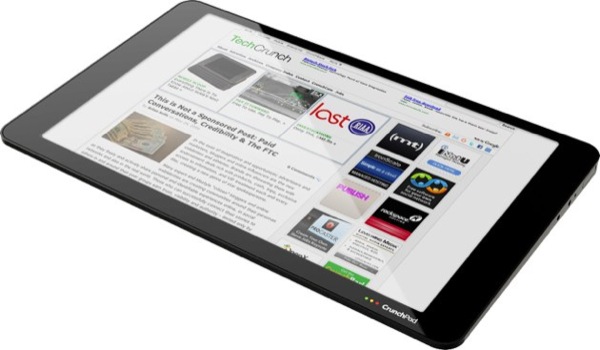Here in the VRM development community we’ve been talking (and in some cases working) for several years on the Personal RFP. Technically an RFP is a “buyer-initiated procurement protocol” for businesses doing business with businesses: B2B as they say. With VRM the buyer is an individual. Hence, Personal RFP. Not a great label, but one that businesses understand.
Now comes Scott Adams (Dilbert’s cartoonist), with Hunter Becomes the Prey. His compressed case:
Shopping is broken… Google is nearly worthless when shopping for items that don’t involve technology. It is as if the Internet has become a dense forest where your desired purchases can easily hide.
Advertising is broken too, because there are too many products battling for too little consumer attention. So ads can’t hope to close the can’t-find-what-I-want gap. The standard shopping model needs to be reversed. Instead of the shopper acting as hunter, and the product hiding as prey, you should be able to describe in your own words what sort of thing you are looking for, and the vendors should use those footprints to hunt you down and make their pitch…
You can imagine this service as a web site. The consumer goes to the section that best fits his needs (furniture, cars, computers, etc.) and describes what he wants, in his own words. Vendors could set key word alerts via e-mail or text for any products in their general category.
Once they read the customer’s needs online, they have the option of posting their solution, publicly, which gives other vendors and consumers an opportunity to offer counterpoints.
I assume this service already exists in some weaker form. www.answers.yahoo.com is a step in the right direction, but it doesn’t broadcast your needs to vendors.
My prediction is that Broadcast Shopping (as I just decided to name it) will become the normal way to shop.
I love “broadcast shopping.”
Where I veer from Scott’s approach is with the assumption that this requires “a site.” That’s because sites become silos, and silos are a big part of the problem we also have with loyalty cards. All are different. All say We have ways of making you shop. Tll trap and control you in their own ways. We need something that serves as a customer’s own tool, and works as simply as a keyring, a car key, an emailing, or a text message. “Here’s what I want: _________.” That’s it.
In business, RFPs use an open protocol (essentially, formalized paperwork and bidding processes). Anybody can use it. We need the same for broadcast shopping. Any of us should be able to broadcast, in a secure and selective way that protects our privacies, specified goods we’re shopping for.
I use the plural of privacy because what we reveal selectively will depend on who we already relate to. For example, say I have a trusted relationship with Nordstrom, Sears and a variety of smaller clothing retailers. I could broadcast only to those stores my need for a tan cotton dress shirt of a particular brand, with a 17″ neck and 31″ sleeves (my actual dimensions, there — I have a linebacker’s neck and arms like a penguin’s flippers). Or I could broadcast the same need to the general marketplace through a fourth party that intermediates on my behalf, not revealing any information about me beside my actual need.
One scenario Scott describes in his post…
For example, let’s say you’re looking for new patio furniture. The words you might use to describe your needs would be useless for Google. You might say, for example, “I want something that goes with a Mediterranean home. It will be sitting on stained concrete that is sort of amber colored. It needs to be easy to clean because the birds will be all over it. And I’m on a budget.”
Your description would be broadcast to all patio furniture makers, and those who believe they have good solutions could contact you, preferably by leaving comments on the web page where you posted your needs. You could easily ignore any robotic spam responses and consider only the personalized responses that include pictures.
… outlines a broad class of needs where the customer’s mind is not yet made up. Those are within the scope of VRM, but I think we should start with cases where the actual requirements are known by the buyer, and the buyer can set the terms of engagement. For example, “I want my receipt emailed to me in (this specified) data format, and I don’t want to receive any promotional material.”
All this is not only do-able, but inevitable.
I’ll conclude with a pitch of my own for funding research and development on this work.
Google should be interested because Advertising in Reverse, or Broadcast Shopping (a term I love, by the way), will either undermine or replace the company’s standing business model (which pays for all those freebies we enjoy).
Microsoft should be interested because this could give them something Google doesn’t have yet.
Yahoo should be interested because they need something new that’s a winning idea. Amazon and eBay should be interested because they’re already in that business, though in a silo’d way.
Oracle should be interested because it will sell more databases and Sun gear.
Apple should be interested because it’s one more area where they can push for new standards on which the range of innovation goes through the roof.
Every retailer and intermediary should be interested because the promise of the Net for buyers is not an infinite variety of closed silos, but a truly open marketplace where any buyer can do business with any seller — and on the buyer’s terms and not just the seller’s.
Like everything else we will come to depend on utterly while remaining absent in the present, VRM is thoroughly disruptive idea. It’s always smart to get ahead of the curve by getting behind what will bend it.




